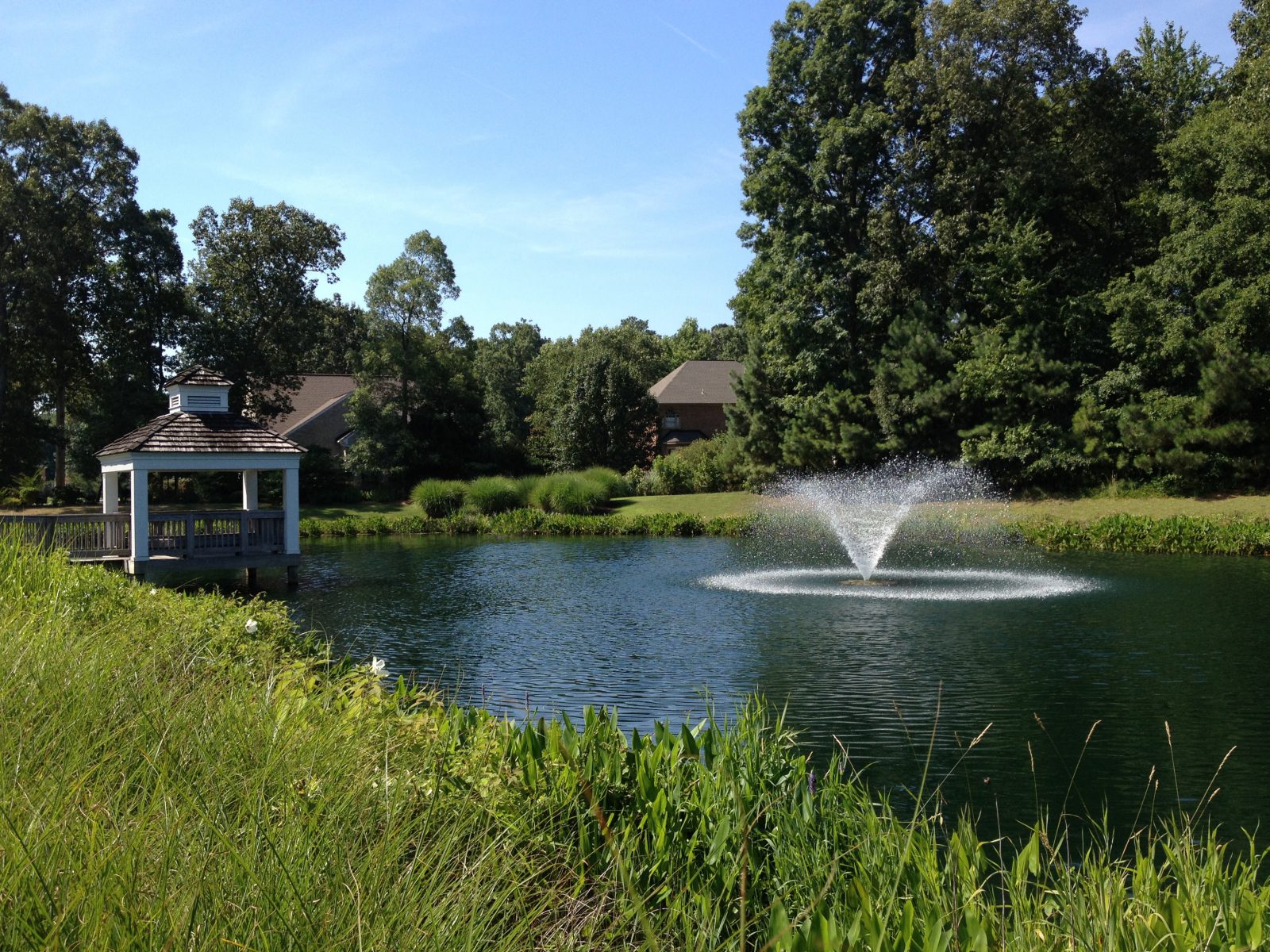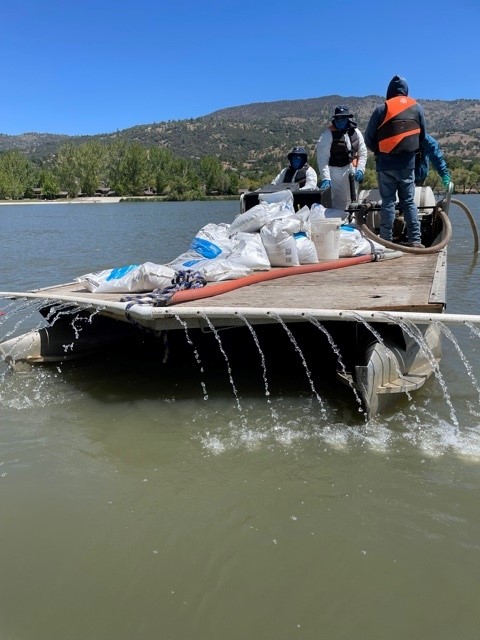
Phoslock – A Proven Strategy for Water Quality Improvement
Written by Industry Expert Shannon Junior, Aquatic Ecologist
As part of SOLitude Lake Management’s dedication to Integrated Pest Management strategies, we are constantly searching for new and environmentally sustainable practices that will reduce the quantity of aquatic herbicides that we apply to waterbodies, while still achieving the goals of our clients to have healthy and attractive ponds and lakes. Our firm works diligently to develop improved lake management strategies, working hand in hand with manufacturers to provide field research for new product development. We are always eager to try new technologies, and to incorporate them into our management programs when we find successful new products.

SOLitude was fortunate to be among the first companies in the U.S. to have the opportunity to use an innovative new phosphorus binding product called Phoslock. Since 2012, we have applied it to hundreds of ponds and lakes, and we are very excited about its implications for our clients’ waterbodies and the Lake Management industry in general.
Over time, sediment and organic matter slowly accumulate in the bottom of a waterbody. This natural aging process, known as eutrophication, is one of the worst enemies of a healthy pond or lake. Reducing the availability of excess phosphorus can improve the trophic status and water quality in ponds and lakes. Phoslock reduces phosphorus and improves water quality by resetting the eutrophication clock (aging process).
Phoslock is derived from a naturally occurring mineral called lanthanum, which has a high affinity to bind with free reactive phosphorus. The reaction forms an inert complex known as rhabdophane (LaPO4), which is extremely stable and insoluble. As a result, phosphorus will not release and become bio-available in waterbody.
The product is completely safe for use in the aquatic environment, with no adverse effects on fish, macroinvertebrates, or other wildlife.
Because of the high specificity of Phoslock, the amount required to mitigate phosphorus in a pond or lake can be directly calculated by performing laboratory testing on the water and sediment. Once the results are evaluated, a site-specific phosphorus removal prescription can be developed to directly address the nutrient issues of a waterbody. Even without the laboratory testing, we have also had very good luck applying a moderate baseline rate of the product to ponds and lakes on an annual basis as part of our management program. While this is not the preferred scenario, we have had proven and measurable success using this strategy when our clients do not have the budget available for a comprehensive mitigation program.
In order to evaluate the effectiveness of Phoslock when used as part of an annual management program, we applied a moderate rate of the product to 100 ponds in 2012, and developed an objective rating system to quantify the results. When laboratory testing is not available, we instead assessed the management inputs compared to historical programs as an indicator of phosphorus, tropic status and water quality of these ponds. Our assumption is that older ponds with poor water quality require more management compared to younger ponds with better water quality.
For ponds where there was no obvious difference in water quality and management inputs, we used a rating of “Neutral”. Ponds where there was an improvement in water quality and reduction in management inputs were rated as “Positive”, and ponds with a significant improvement in water quality and 50% or greater reduction management inputs were rated as “Excellent”.
We observed Positive to Excellent in 83% of the ponds (49% Excellent, 34% Positive) and the remaining 17% were rated as Neutral. As an example of improving the trophic status and water quality, one pond had a 50% reduction in management inputs in 2012, an 85% reduction in 2013 and a 99% reduction in 2014 compared to the 2011 program.
Moving forward, we will continue to integrate Phoslock as part of management programs to reduce phosphorus, improve the trophic status and ultimately improve water quality in our clients ponds and lakes. Although Phoslock is not necessarily less costly than herbicides from a monetary standpoint, we feel that a more environmentally sustainable strategy is the best value that we can provide for a long-term management program.
Shannon Junior is an Aquatic Ecologist with SOLitude Lake Management. Since 1998, SOLitude Lake Management has been committed to providing full service lake and pond management services that improve water quality, preserve natural resources, and reduce our environmental footprint. Services are available throughout the Eastern United States. Fisheries management consulting and aquatic products are available nationwide. Learn more about SOLitude Lake Management and purchase products at www.solitudelakemanagement.com.









